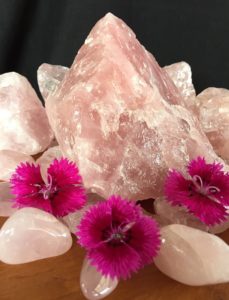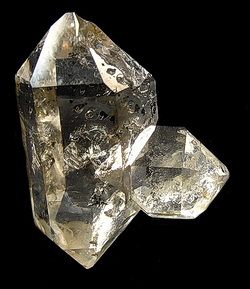The human fascination for what lies beyond earth has always been intriguing, even in the primitive times. By the virtue of this unrelenting fascination and general curiosity, we have succeeded in traversing the space that exists further than our planet.
Our excursions to space only started during the later years of the 20th century. On the other hand, Earth has been welcoming foreign bodies from in the form of meteorites thousands of years before our missions to space in the 20th century.
Meteorites are the infinitesimal debris originating from a variety of celestial bodies within our solar system. They are mostly the fragments of comets, meteoroids, and asteroids, which withstand the atmospheric entry to our planet and fall on Earth. In this article, we will discuss some basic aspects of these minor spatial bodies that end up on our planet and deemed valuable specimens by many stone collectors, hobbyists, and professionals, such as geologists, astro scientists and natural history museums curators.
Meteor, Meteoroid or Meteorite?
There is a general confusion regarding the terms meteors, meteoroids, and meteorites. Many people wrongly interchange these terms. So, before we move to discuss meteorites in detail, it will be fitting to lay this confusion to rest once and for all.
- Meteor: The term is actually used to describe the streak of light blazing through the atmosphere due to burning celestial debris.
- Meteoroid: It is that interplanetary object that burns up in outer space to produce a ‘meteor’.
- Meteorites: They are those few meteoroids and their remnants that don’t get vaporized upon entering the atmosphere of earth.
Micrometeorites
Whenever we talk or think about spatial and interplanetary things, it is usually underlined with the assumptions of colossal masses and gargantuan planetary balls. But it is interesting to note that most of the interplanetary stuff that ends up on earth is really small in size, even by the non-astronomical size and dimension standards.
For instance, most of the celestial mass that ends up on earth has a size smaller than 100 micrometers per specimen and hence called micrometeorites. All these micrometeorites don’t survive the atmospheric entry and transform into dust. But this dust from far off planets and stars collectively add somewhere between 30,000 and 40,000 tons to the mass of earth every year.
Classification of meteorites
Classification of meteorites is usually carried out on two criteria i.e. how they are found on the ground and which elements they are made of. Let’s have a look at them one by one.
Finds and Falls
Meteorites that are discovered way too long after their fall on earth are called Finds. On the other hand, meteorites falling that is witnessed by observers and later collected through planned quests by collectors are called Falls. The latter type of meteorites is more sought-after among the collectors. However, some exceptional Finds specimens also get good money to its discoverers.
Iron meteorites
These meteorites have the prefix of iron because they are primarily (90-95%) made of the metal. According to astronomical studies, iron meteorites are believed to be part of the inner mantle of planets that perished hundreds and thousands of years ago. It is also said that iron meteorites found on earth are mostly the fractions of asteroids present in the belt of interplanetary objects between Jupiter and Mars.
Unlike normal geological stones, iron meteorites are way heavier. This exceeding weight is due to the densely packed iron molecules. If you have ever lifted a cannonball with your bare hands then you can get an idea of how heavy an iron meteorite is. Besides iron, traces of nickel and other metals are also present in this type of meteorite.
Kamacite: An Alloy Found in Iron Meteorites
Some iron meteorites also contain a naturally developed alloy of iron and nickel called Kamacite. The formation of this alloy introduces crystallization changes in the meteorite that can be seen through aesthetical patterns and color combinations when the specimens are cut, polished and treated by a mild nitric acid solution.
Stone Meteorites
These are the most abundant meteorites found on the earth surface. Stone meteorites are made of the external crust of interplanetary bodies and hence look pretty similar to any earthly rock specimen. People with no meteorite hunting expertise can’t tell them apart.
However, stone meteorites that have recently fallen on earth get a peculiar black crust because of their smoldering upon entering the earth’s orbit. Stones meteorites have lesser demand in the collector’s industry in comparison to iron meteorites. However, there are some special specimen stone meteorites that are sought-after because of their visual appeal and history.
Chondrule-laden Stone Meteorites
There are some stone meteorites that contain unusual, grainy and vibrant inclusions called ‘chondrules’. This ‘impurity’ makes meteorite specimens more attractive. Apart from that, collectors are also intrigued by these specimens because of the history of chondrules.
It is believed that chondrules were once part of the solar nebula. This means these tiny grains are the most ancient item present on the earth surface even predating the formation of our planet and the life that has ever existed here.
Miscellaneous Types of Meteorites
Besides these two mostly occurring meteorites, some other rare specimens are found.
Stone-Iron Meteorites
They make up two percent of all the meteorites found on earth surface. Because of this extraordinary arrangement of two different materials, these meteorites are popular among collectors, which also make them relatively expensive. They are often framed or showcased after receiving some treatment (polishing and acid treatment).
Lunar and Martian Meteorites
Some really rare meteorites have also been discovered that originated with the impact of other celestial bodies on the surface of the Moon and Mars. Lunar and Martian meteorites are extremely rare and therefore can be sold with a hefty price tag. They are often priced as per their weight like any precious gemstone or rare earth metal.
You can learn more about observing and finding meteorites on the Astronomical League website.







